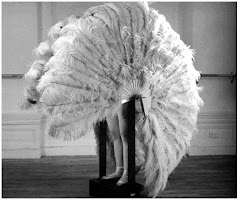
my email is struggling opening up the blog so this is PAIGE DAWKINS

 In the final throes of our class, I shared some images and clips from the Puppeteers of America Festival (and some puppetry related materials). Inquisitive and enthusiastic as you are, I am posting some of the images and links here so that you have them for your reference.
In the final throes of our class, I shared some images and clips from the Puppeteers of America Festival (and some puppetry related materials). Inquisitive and enthusiastic as you are, I am posting some of the images and links here so that you have them for your reference. 












 I saw this dress and really started thinking about how the shoulders of a garment affect how it looks as a whole. I know we were talking about how women began wearing clothes with broader shoulders as they were coming into the work force, and this just reminded me of that a little bit. The simple shapes are very effective, as well as the elegance from the black fabric. :)
I saw this dress and really started thinking about how the shoulders of a garment affect how it looks as a whole. I know we were talking about how women began wearing clothes with broader shoulders as they were coming into the work force, and this just reminded me of that a little bit. The simple shapes are very effective, as well as the elegance from the black fabric. :)






Throughout history, humans have invented myriad ways to enhance and constrict the body. Garments and contraptions, from bustles to ruffled collars, were often shaped by a society’s beliefs and the political conditions of the time. Taking inspiration from the images we looked at in class and pursuing your own research, invent an accessory, wearable structure or garment that reinterprets a historic element or suits a particular purpose today.
Phase 1:
Identify the source(s) of inspiration that will be your springboard into this project! Look through reference books, select an image from the slideshow, choose a particular garment, historic accessory or part of the body as your starting point. Generate ideas by writing, drawing or collaging in your journal. Sewing samples may be a valuable way to develop your concept.
Phase 2: Using only the materials provided (5 yards of muslin, black and white thread, scissors, twine, reed and millinery wire) respond to the prompt above.

A month long intensive Pre-College course at the Maryland Institute College of Art, Fashioning Art explores the potential of fiber media in creating 3D Sculpture and Wearable Art.




